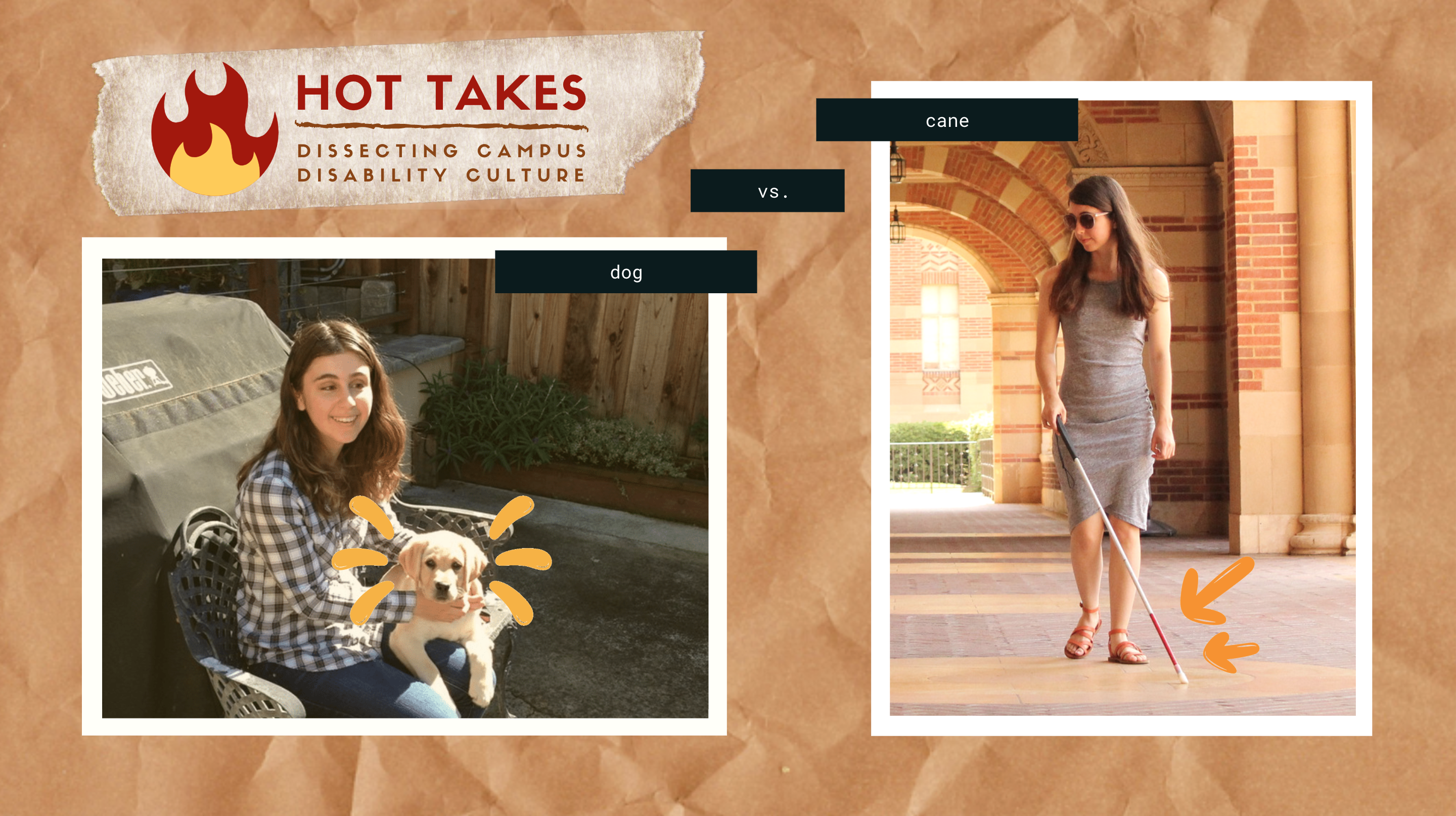
By: Megan Borella
To use a guide dog or a cane, that is the question. These are the two main vehicles we blind people utilize to navigate, as we aren't legally allowed behind the wheels of cars quite yet. I have always used a cane, but I can also appreciate the value of a guide dog and have often contemplated making the switch. However, both dogs and canes have their downsides, and for the majority of college students, a cane will be far easier to handle.
For those of us who were born blind, a cane is placed in our hands usually by the time we enter pre-school. Trained professionals called orientation and mobility instructors work with us on proper cane techniques, crossing streets safely, traversing public transportation, and effectively asking for help from random strangers. People who lose their sight later in life also find their way to these services, although they generally need much more time and training to adjust to using a cane. While these professionals teach us how to travel safely, they do not have the expertise to train us on how to work with a guide dog.
Obtaining a guide dog is not as quick and easy a process as one might imagine. A thorough application must be completed, along with an interview and an assessment of a person's ability to travel with a cane and care for a dog. The same orientation and mobility skills that are relied upon when using a cane are just as essential when transitioning to a guide dog, and so must be present in order to qualify for receiving one. Guide dog employees also interview any recent O&M specialists we may have worked with. The application process differs slightly depending on where an individual is obtaining their dog from, but in general, the process is fundamentally the same.
Canes are incredibly easy and low maintenance. They don't have to be walked, fed, cleaned up after, or entertained in any way. I can simply lean mine against a wall as soon as I get home and not worry about it until I'm ready to head out again. But canes also can't think and aren't sentient. I know, shocking, right? Unlike a cane, a dog can see obstacles on an upcoming path and successfully lead us around them. They can look out for traffic and keep us from getting run over at a difficult, complicated intersection. They can help people who aren't as comfortable with a cane travel much more quickly and confidently. They can also deter potential strangers who don't have the best intentions. I know I would probably feel a lot safer walking around at night with a dog rather than a cane. My friends are pushing for the switch merely so they can have an animal to pet when it's off duty, which is also a valid point. A guide dog can impact someone's social life, although that should not be the main reason for acquiring one. The presence of an animal, however, can be an automatic icebreaker that helps people feel less awkward when interacting with someone who is disabled. Side note: NEVER touch someone's guide dog OR cane while it is being used. There is absolutely no reason to do so, and it's distracting and annoying. We are completely reliant on either the dog or the cane to get us to where we need to be, and any interference, whether well-intentioned or not, is not appreciated and is the opposite of helpful. Always ask before you touch, as you should with anyone else. Just because we have a visible sign of a disability does not mean our personal space no longer exists.
Originally Posted: 11 September 2019

